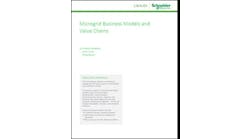Kansas City Power & Light to Double its Energy Efficiency Investment in Missouri – if the State Allows it
NRDC, along with several other environmental groups and the Missouri Division of Energy, has just reached an agreement with Kansas City Power & Light that would approximately double the benefits of energy efficiency for people in the Kansas City region. Under the agreement, KCP&L’s plan would be the most aggressive in Missouri, cutting energy use during the plan period by more than 1.3 percent of annual sales – that’s energy that otherwise would have been wasted and created needless pollution and expense for customers.
But before the utility can go ahead with this plan, it still needs to gain the approval of the Missouri Public Service Commission.
If the commission approves the agreement without delays, KCP&L will roll out a savings plan that, by the end of 2015, will give its customers access to programs that will save over 107,000 MWh of electricity. It will also increase the savings KCP&L is already providing customers in its other Missouri service territory by an additional 27,000 MWh. With the combined programs in place, Kansas City utility customers will be on track to save nearly 300,000 MWh of energy – enough to power more than 27,000 homes for a year! These savings will also help prevent as much carbon pollution as would be emitted by 50,000 cars in a year.
KCP&L is by no means alone in bringing the benefits of efficiency to the Show-me State. In fact, once KCP&L’s plan is approved by the commission, all of Missouri’s investor-owned utilities will be providing efficiency to their customers as a lowest-cost energy resource. Across the state, in my hometown of St. Louis, Ameren Missouri has also completed a full year of delivering more energy-saving services to its customers than any utility in the state, and it has done it while achieving bigger savings at lower costs than projected at the outset of the plan. Even though we are only one year in to Ameren’s three-year efficiency plan, its customers have already found ways to hold on to more than $140 million that would otherwise have been spent on wasted energy. Once Ameren completes its first three-year savings plan, their programs will have put about $500 million back in the pockets of Missourians.
These savings are only the beginning of the benefits of energy efficiency. There is a universe of benefits well beyond these cost savings we get by avoiding the need for new power plants and transmission wires. Lowering our energy consumption protects children who suffer from asthma and the effects of exposure to high levels of mercury, reduces our climate change impact, and provides us with healthier rivers, lakes, and land. And let’s not forget the satisfaction that comes from upgrading our homes with the latest and best equipment, and the benefits of creating jobs for Missourians who make, sell, engineer or install these upgrades! All of these benefits are routinely omitted by most utilities and regulators when they run their cost-benefit equations to determine which investments are worth making, so we still have a long way to go before we capture all of the truly “cost-effective” efficiency opportunities out there.
Efficiency works when we keep the same or better amenities that we currently enjoy while burning less fuel and spending less money. For example, refrigerators today are bigger and have more useful features than their 1970s counterparts. Nevertheless, the average fridge today costs about a third of what people paid in the 1970s, and it uses only about a quarter of the energy. The result is that we all have an extra $200 or so in our pockets each year to spend on something besides keeping our food cool.
Overcoming Barriers
But despite the many benefits of efficiency, there are still a lot of barriers between most of us and the savings locked up in our old furnaces, air conditioners, ducts, water heaters, and windows. When we need to replace these items, we are usually mainly concerned with getting a new one quickly and cheaply. If a more efficient model costs more or is harder to find than a less efficient one, our budgets will usually push us to buy the model that costs less today even if the more efficient one would pay for itself over time with the money it saves.
To help overcome these barriers, the Missouri Energy Efficiency Investment Act, or “MEEIA,” (enacted and signed into law in 2009) encourages electric and gas utilities to invest in rebates and other programs to help get more efficient products into homes and businesses. MEEIA recognizes that it is cheaper for utilities to help customers use less energy than it is to build and maintain new power plants, and it rewards utilities for reaching demand-reduction goals each year.
While these benefits are great news for Missourians and a major improvement over all previous years, we have only begun to scratch the surface of what efficiency can do for Missouri. MEEIA sets a goal of reducing Missouri’s energy usage by 9.9 percent by 2020. But even this level of efficiency is realistic and well within reach for Missourians if utilities continue to redouble their efforts, and if the Public Service Commission approves savings plans like the ones proposed in today’s agreement.
David Weiskopf is a Sustainable Energy Fellow at the Natural Resources Defense Council. This blog originally appeared on NRDC’s Switchboard blog.






